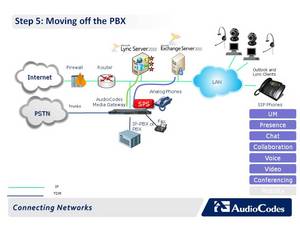Moving off the PBX
 In any big project – and let’s face it, going from a traditional telephony system to a fully-integrated unified communications system is a big project! – there’s a step at which the point of no return is past – where the hardest work is done, the old system is just about retired, and everything you do from there on in will add more and more value to the overall solution.
In any big project – and let’s face it, going from a traditional telephony system to a fully-integrated unified communications system is a big project! – there’s a step at which the point of no return is past – where the hardest work is done, the old system is just about retired, and everything you do from there on in will add more and more value to the overall solution.
In step five, we cross that Rubicon. It’s time to get rid of the PBX.
Over the previous four steps, we’ve taken care of a lot of the steps to reach this goal – now it’s just a matter of rounding up the stragglers, as it were.
From fax machines to analogue phones in public places where hosting an expensive SIP phone doesn’t make sense, there are bound to be some devices in your customers’ environments that simply aren’t going to make the trip to unified communications as easy as the SIP-compliant parts will. But we’ve got a solution that will keep them in the new solution and working as good as ever, or better!
To make this happen, we’ll add an FXS module to the Mediant 1000 gateway we’ve been building on since the beginning of this process, or (as was possible with SPS in the last step) we’ll bring in FXS as a stand-alone appliance. Once again, SPS will take care of connecting the analogue devices connected to those FXS ports to Lync.
As sad and lonely an image as it creates, the PBX is now ready for retirement. Such is the nature of ongoing evolution of technology. With the greater value of unified communications unlocked, it’s time to bid adieu to the old, expensive PBX. Remember back in step three when we recommended you take advantage of the “drop and insert” architecture in connecting trunk lines into the UC solution? Here’s where doing that really pays off. Moving traffic that used to be routed to the PBX over to Lync is as simple as making some changes to the routing tables in the Mediant – no physical re-cabling to be done. Once you’ve completed this “soft cut” away from the PBX, you can physically remove the PBX, and start getting ready to put the finishing touches on this once-daunting project.
In the next step, we’ll take care of one of the last foundational changes on the route to unified communications – we’ll make the transfer to full SIP trunking.
Continue reading to Step 6 >>
-thumb-autox90-10361.jpg)






Leave a comment